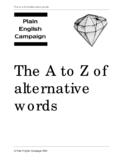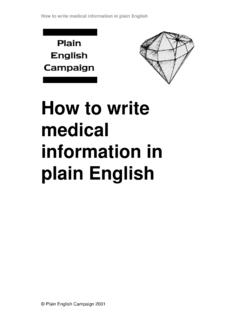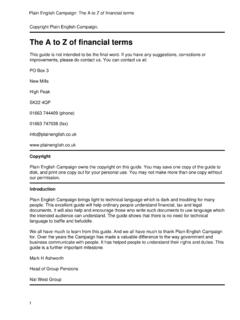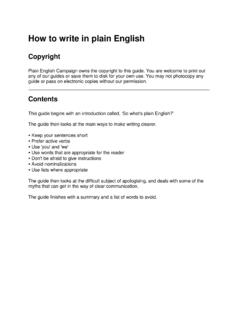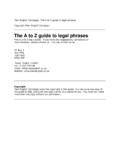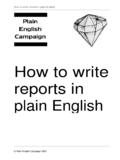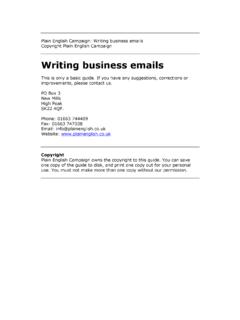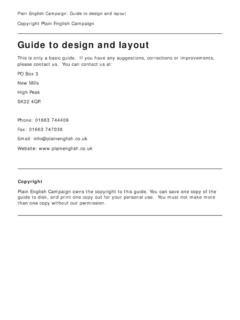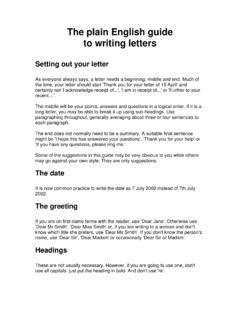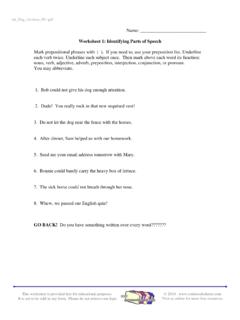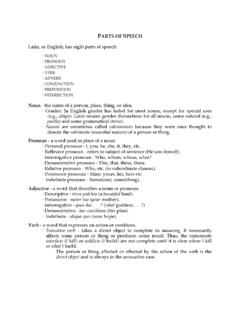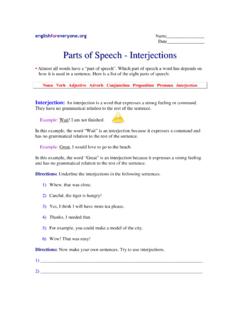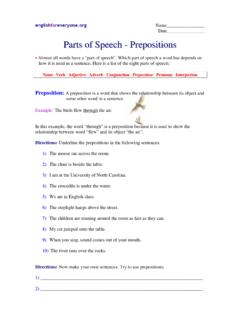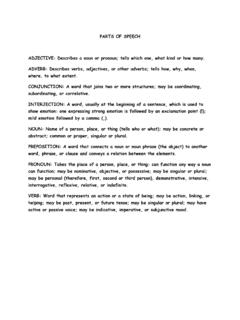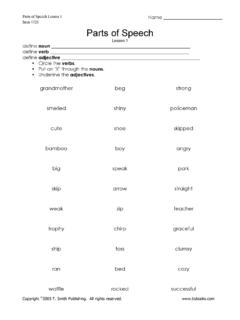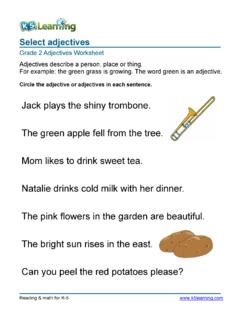Transcription of Basic grammar – parts of speech - Plain English …
1 Plain English Campaign: Basic grammar parts of speech Copyright Plain English Campaign Basic grammar parts of speech This is only a Basic guide. If you have any suggestions, corrections or improvements, please contact us. You can contact us at: PO Box 3 New Mills High Peak SK22 4QP. Phone: 01663 744409 Fax: 01663 747038 Email: Website: Copyright Plain English Campaign owns the copyright to this guide. You can save one copy of the guide to disk, and print one copy out for your personal use. You must not make more than one copy without our permission. Basic grammar parts of speech grammar is the system and structure of a language. The rules of grammar help us decide the order we put words in and which form of a word to use.
2 When you re talking about grammar , it s useful to know some Basic terms. The following are called parts of speech and they each have their own function. Verbs Verbs are often known as doing words . They can also show having or being . For example: The horse jumped the fence. The rider had a fall. The rider is not hurt. Nouns Nouns are the names of people, places, things and ideas. There are four kinds of noun. Common nouns dog, computer, river, biscuit Collective nouns (names of a group of something) a herd of cows, a flock of sheep Proper nouns (the names of people, places and so on) London, Anne, Plain English Campaign Abstract nouns (names of things we can t see or touch) love, hope, fear, decision, poverty Adjectives Adjectives describe nouns.
3 For example: She wore a blue dress. The small dog barked at me. A cool breeze made her shiver. Adverbs Adverbs give us extra information about how, where or when a verb happens. For example: He drove slowly. She spoke loudly. The article is well written. Pronouns Pronouns are usually small words which stand in place of a noun, often to avoid repeating the noun. They include words such as I, you, he, we, hers, they, it. Prepositions Prepositions come before nouns or pronouns and usually show a connection. For example: Your pen is on the desk. The children went to the park. We rested under the tree. Jim hid behind the door. Conjunctions Conjunctions link words, sentences or parts of a sentence together.
4 The rug is blue and cream. The road was busy. And it was loud. I closed the door but I didn t lock it because I thought she was still inside. Articles There are two kinds of article: definite and indefinite. The definite article is the . It is used to identify a specific thing. The indefinite article is a and an . It is used to refer to something in general. For example: The cat sat on the mat. (We know which cat and which mat.) I need a ruler. (We do not need a specific ruler, any will do.) The car would struggle to get up a hill. (We can identify which car, but are referring to any hill.)
